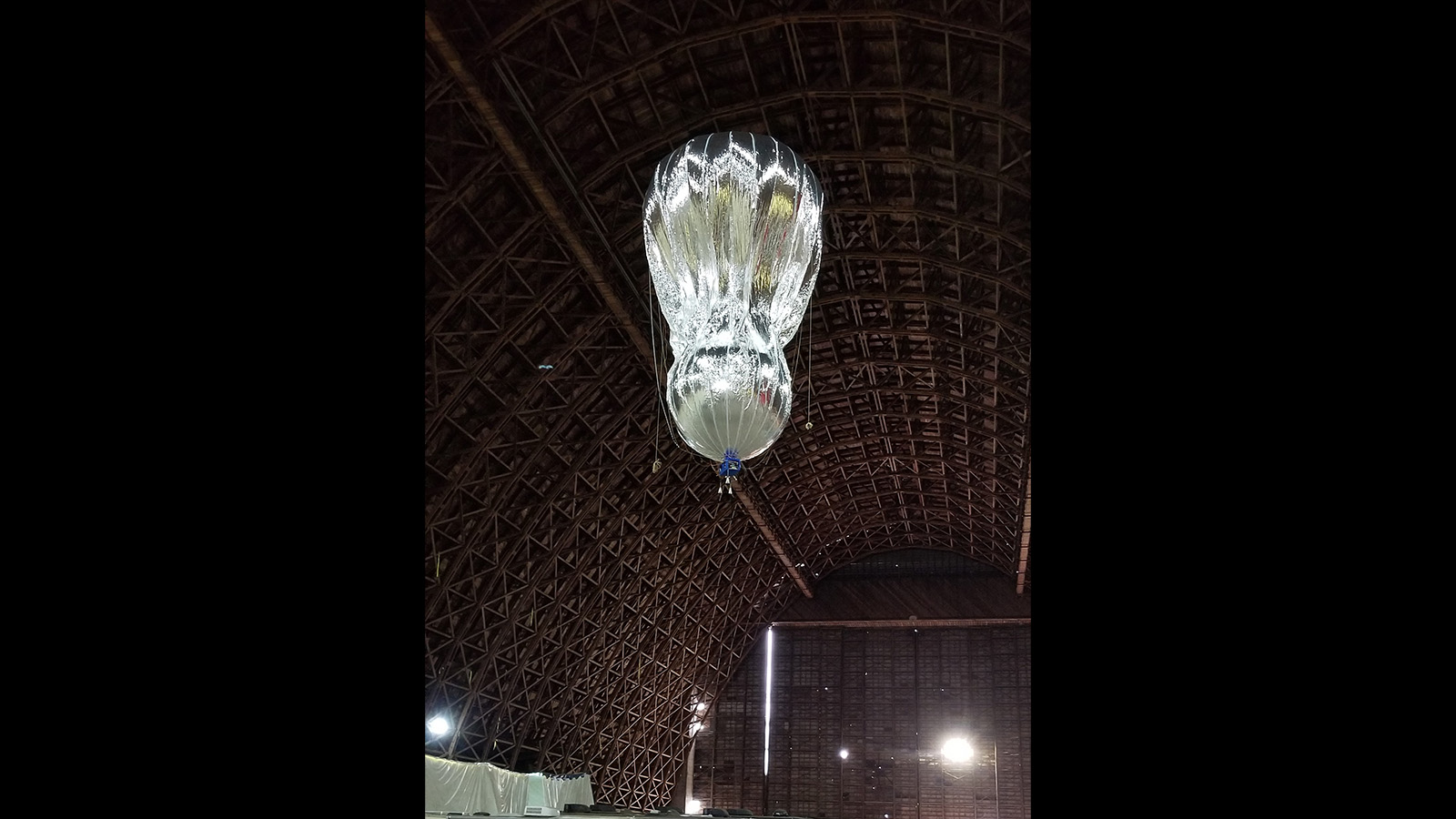Stay Up to Date
Submit your email address to receive the latest industry and Aerospace America news.
The Balloon Systems Technical Committee supports development and application of free-floating systems and technologies for buoyant flight in the stratosphere and atmospheres of other planets.
NASA’s Jet Propulsion Laboratory and Near Space Corp. completed a series of indoor flight tests of their subscale prototype Venus aerobot in August in the Tillamook, Oregon, airship hangar. The aerobot, or robotic balloon vehicle, is based on a metalized Teflon design in which helium pumping between an interior pressurized reservoir and an outside zero-pressure balloon modulates buoyancy and controls altitude. The testing is a prelude to a potential future long-duration mission in the clouds of Venus.
Following the ending of Project Loon, South Dakota-based Raven Industries continued to work on the technology of station seeking using variable-altitude balloons. This ability for a balloon to remain within a useful radius of a target area continues to improve as prediction algorithms improve. Raven is adding a fusion of weather data from multiple sources to its station-seeking system. In August and September, an Aerostar balloon completed a two-month mission over wildfires in California and Colorado to evaluate the effectiveness of these platforms in helping firefighting efforts.
The NASA Balloon Program Office and the Columbia Scientific Balloon Facility resumed balloon campaigns this year after the pandemic cancellations of 2020. Early in the year, NASA launched three balloons from Fort Sumner, New Mexico. NASA conducted its Balloon-Borne Chirpsounder demonstration flight on a new hand-launch system, and two Columbia Scientific Balloon Facility test flights carried numerous piggyback missions, including the All-Sky Heliospheric Imager, the Balloon Observation of Microburst Scales and the Balloon-Based Observations for Sunlit Aurora. NASA flew another eight missions later in the year. It flew the 15th High Altitude Student Platform in September.
JPL flew numerous missions, including the Submillimeterwave Limb Sounder (a heterodyne radiometer-spectrometer that measures the thermal emission spectra of gases in the Earth’s upper atmosphere), Remote (an experiment to study stratospheric chemistry and stability of the ozone layer) and the Water Hunting Advanced Terahertz Spectrometer on an Ultra Small Platform. The second flight of the Planetary Imaging Concept Testbed Using a Recoverable Experiment-Coronagraph mission from University of Massachusetts Lowell imaged exoplanetary dust and debris around stars. This mission used the Wallops Arc Second Pointer, a gondola designed to assist pointing telescopes at specific astronomical objects.
The Physical Science Laboratory at New Mexico State University partnered with Stratodynamics Aviation Inc. of Canada and UAVOS of California to perform a series of stratospheric flights with HiDRON, an autonomous aircraft dropped from a balloon, at Spaceport America in New Mexico. The mission objectives were to advance new systems for forward-sensing turbulence detection on board aircraft at near-space and commercial flight altitudes. The Physical Science Lab provided launch logistics. The system includes a novel, high-altitude aerial platform with multihole wind probe and infrasonic microphone sensors. Researchers tested HiDRON in three balloon flight drop tests in restricted airspace in June. NASA’s Flight Opportunities Program funded the campaign to advance turbulence detection sensors developed by the University of Kentucky and NASA’s Langley Research Center in Virginia.
The French space agency CNES completed a series of climate research balloon flights at Esrange Space Center outside Kiruna in northern Sweden. Through four balloon flights in August, carrying a total of 17 research instruments, the researchers measured the concentration of greenhouse gases at different levels in the atmosphere.
In March, Smith College flew a major upgrade of its Controlled Meteorological balloons as part of the Isotopic Links to Atmospheric Water’s Sources campaign to study cold-air outbreaks near Svalbard, Norway. These altitude-controlled balloons have accrued thousands of flight hours in diverse environments from the Amazon to Antarctica; their closed-cycle buoyancy control and high energy efficiency inspired the basic design for the prototype Venus aerobot.
Contributors: Henry Cathey, Debora Fairbrother, Jeffery Hall, Mike Smith, Eric Waters and André Vargas
Stay Up to Date
Submit your email address to receive the latest industry and Aerospace America news.




